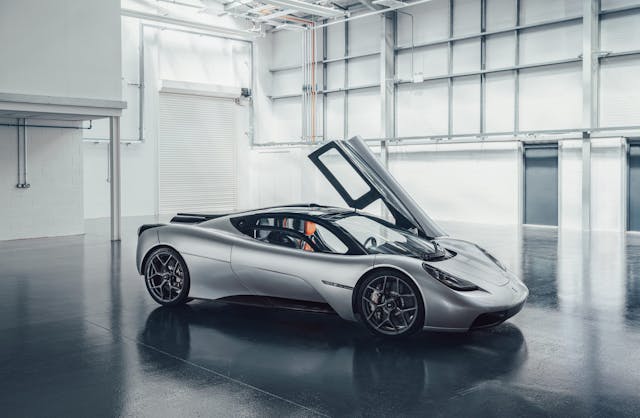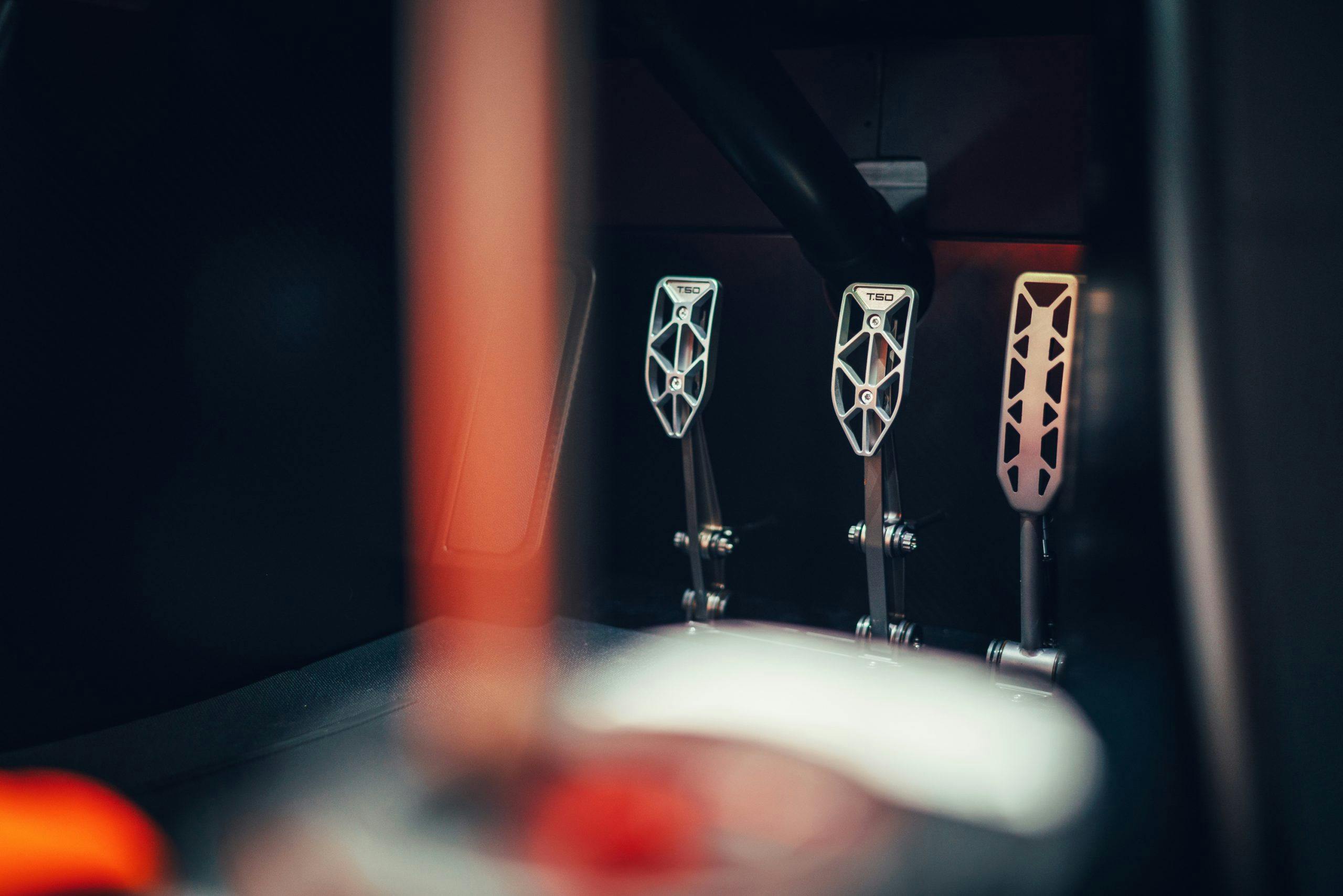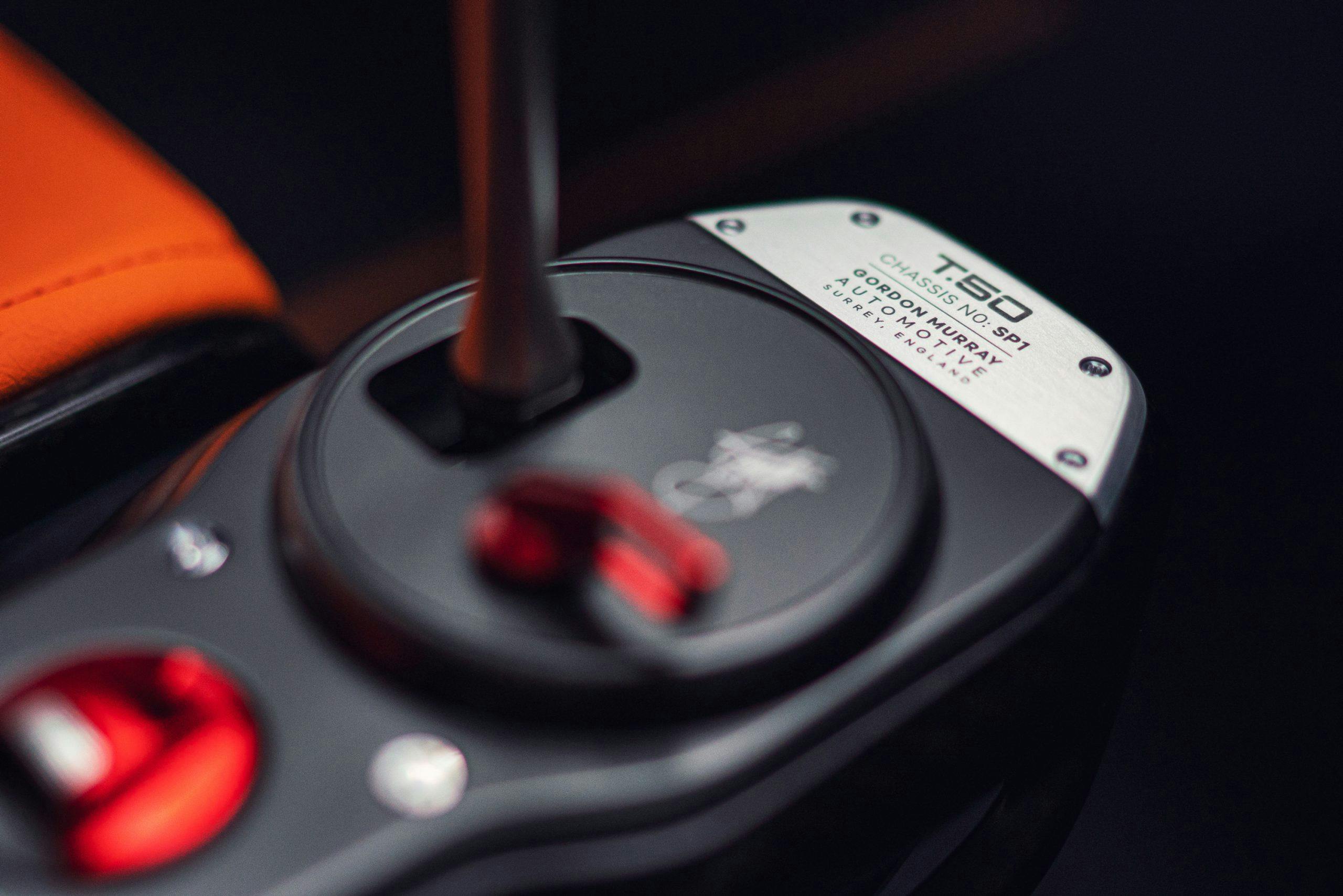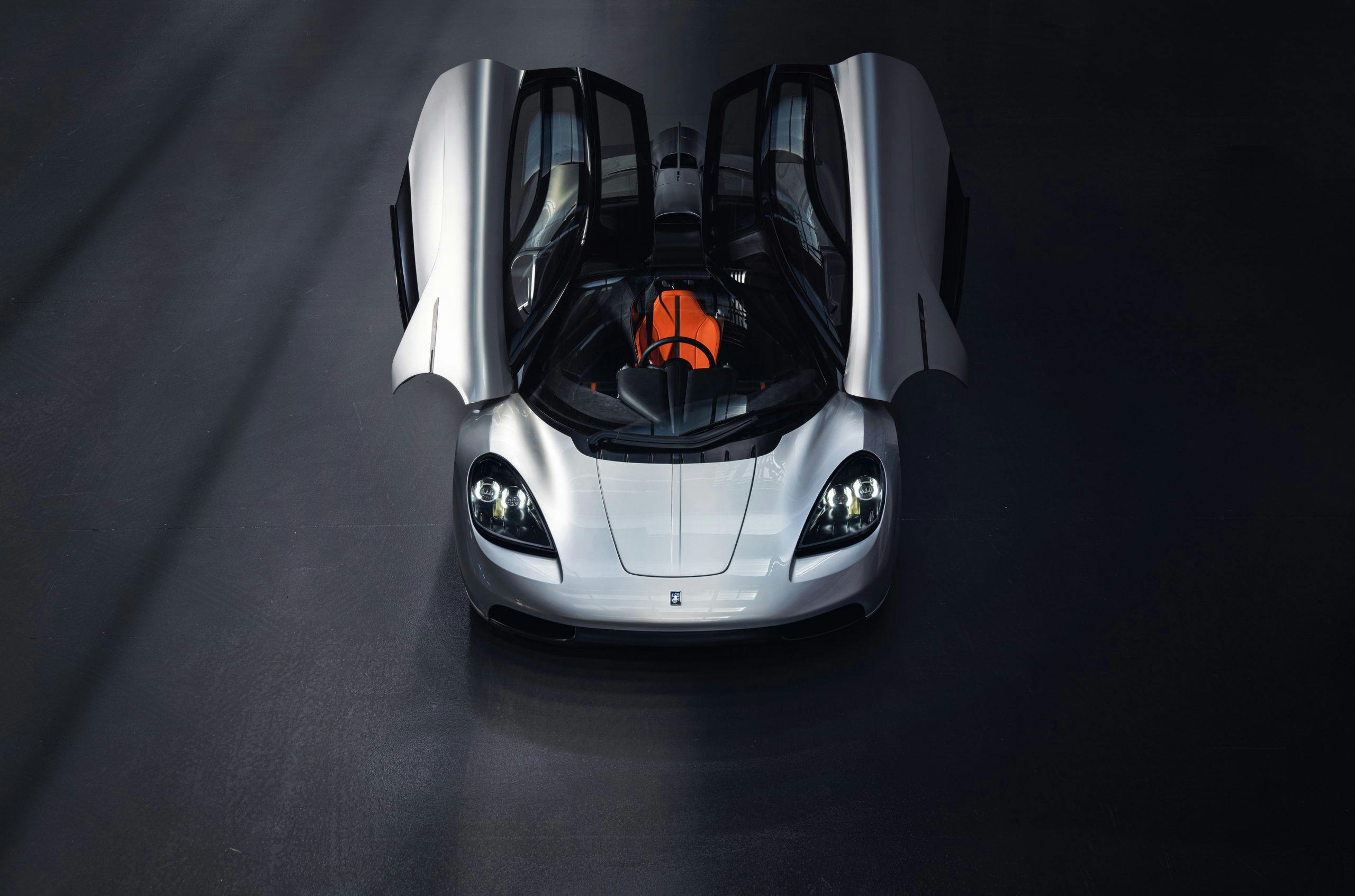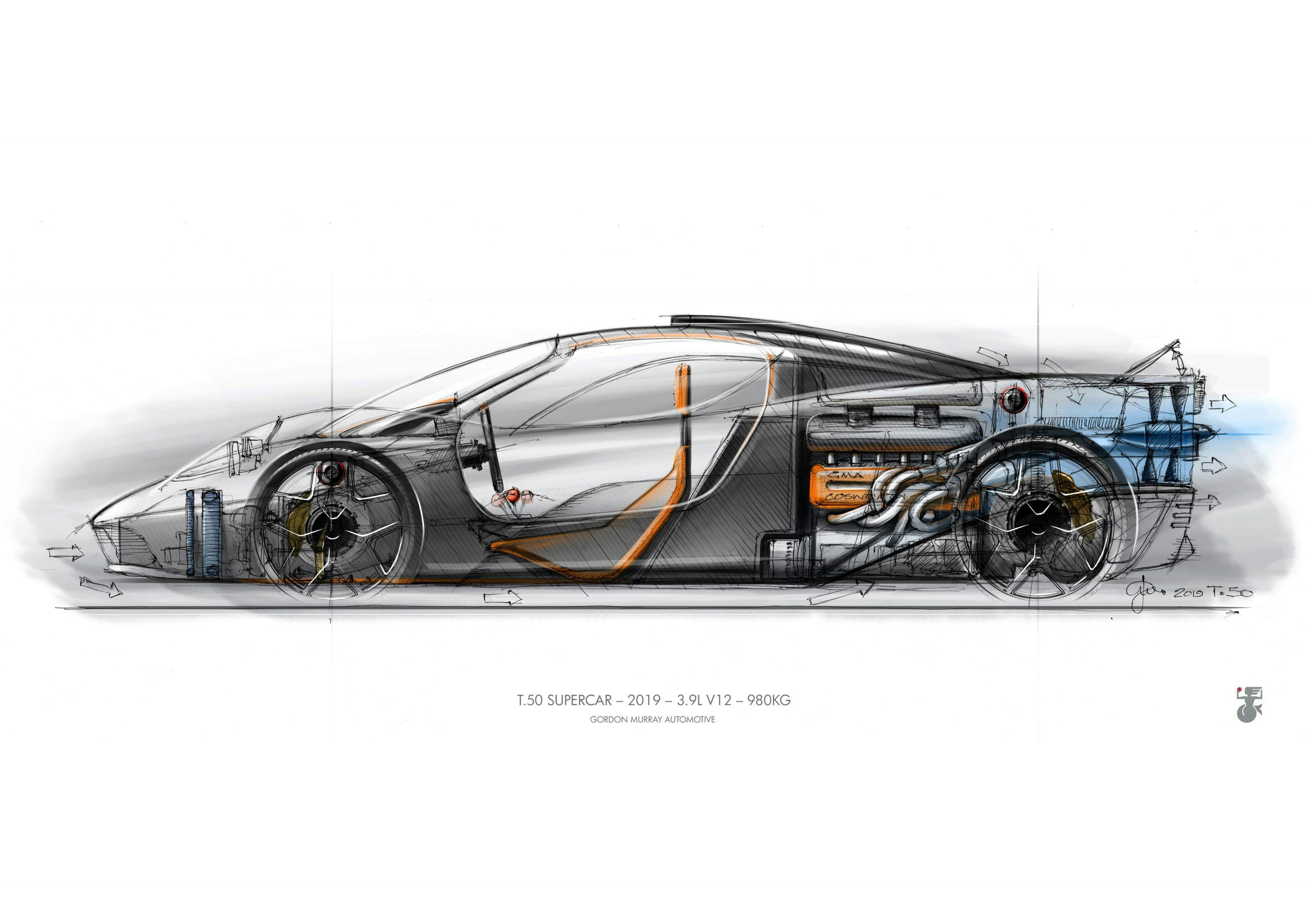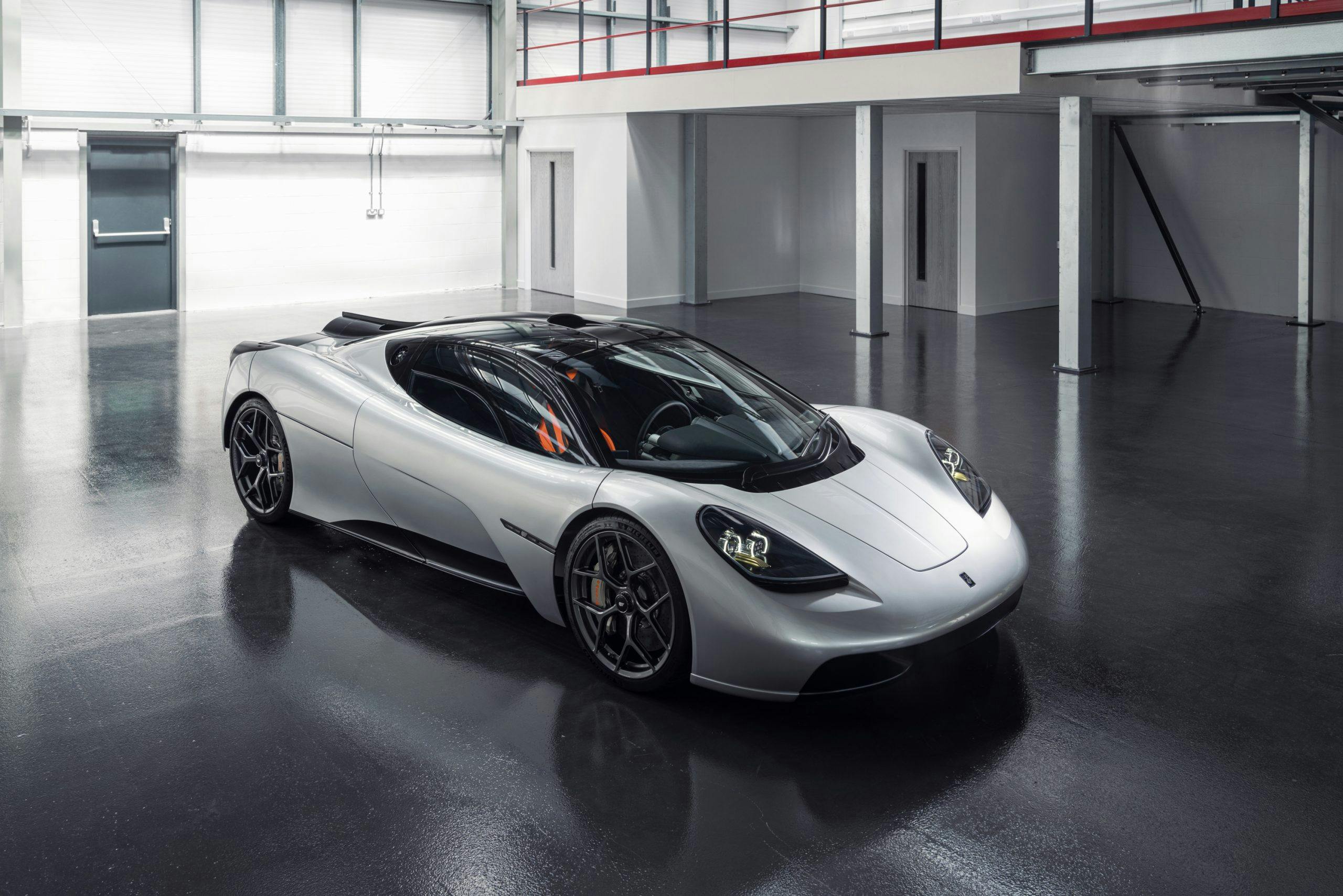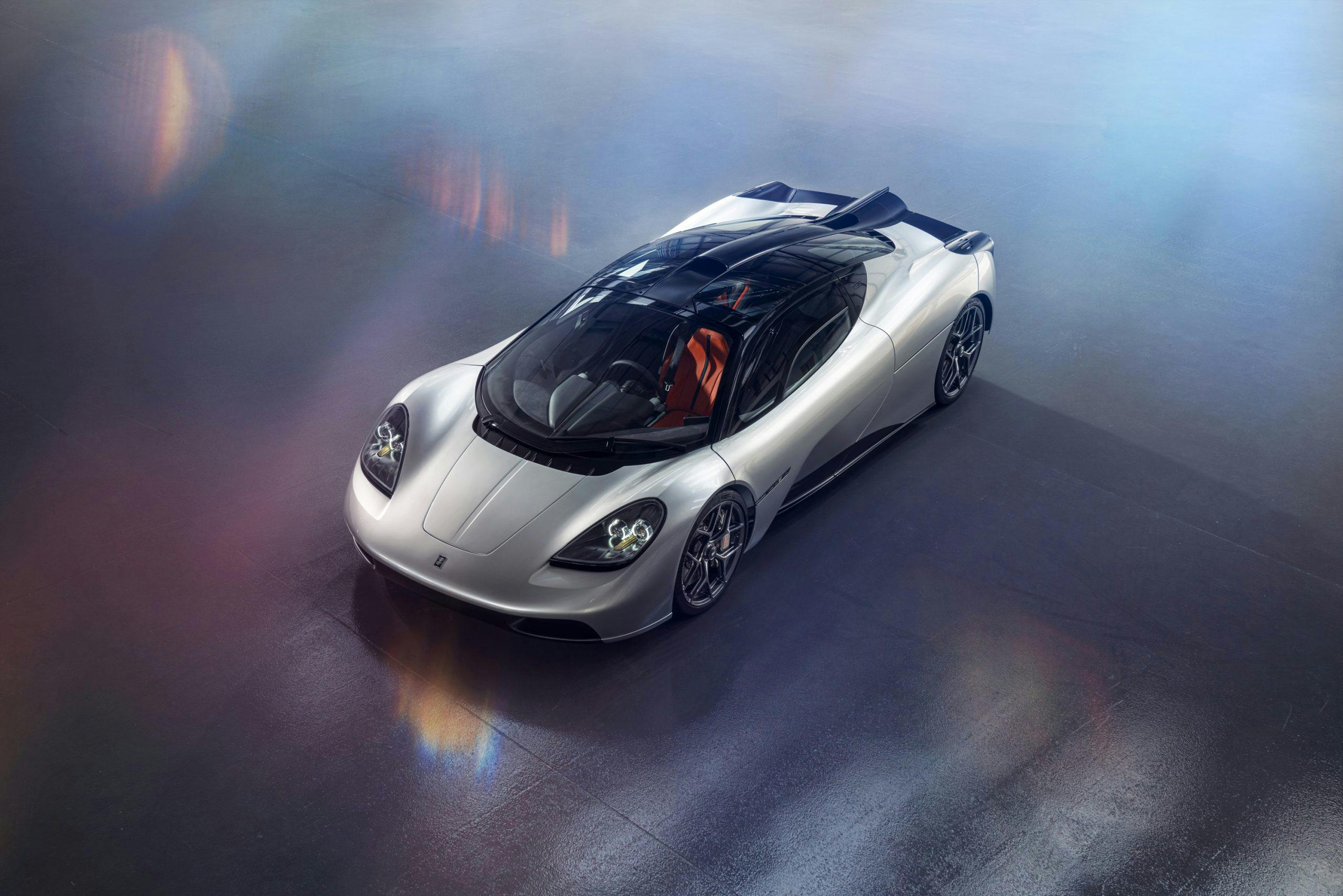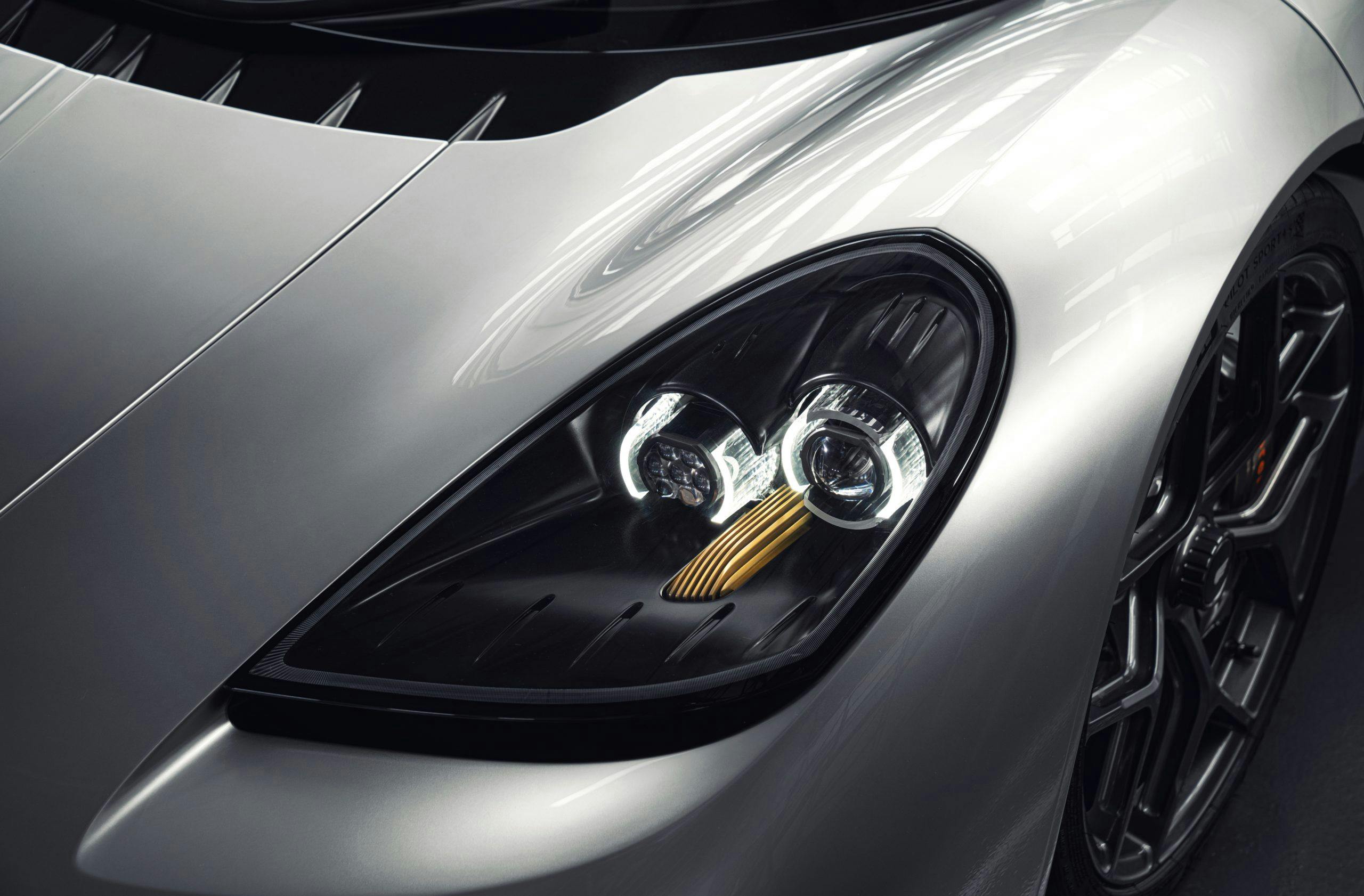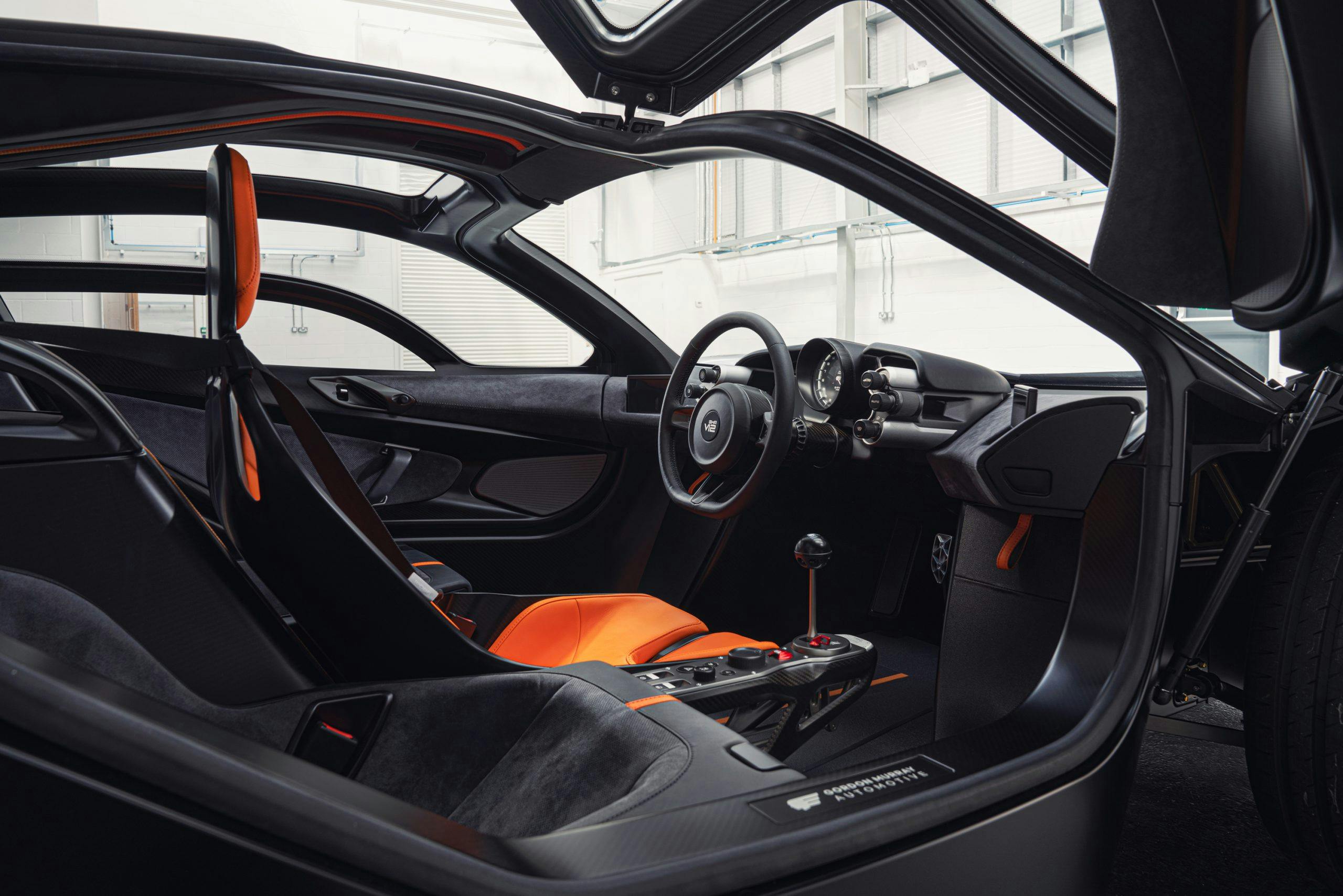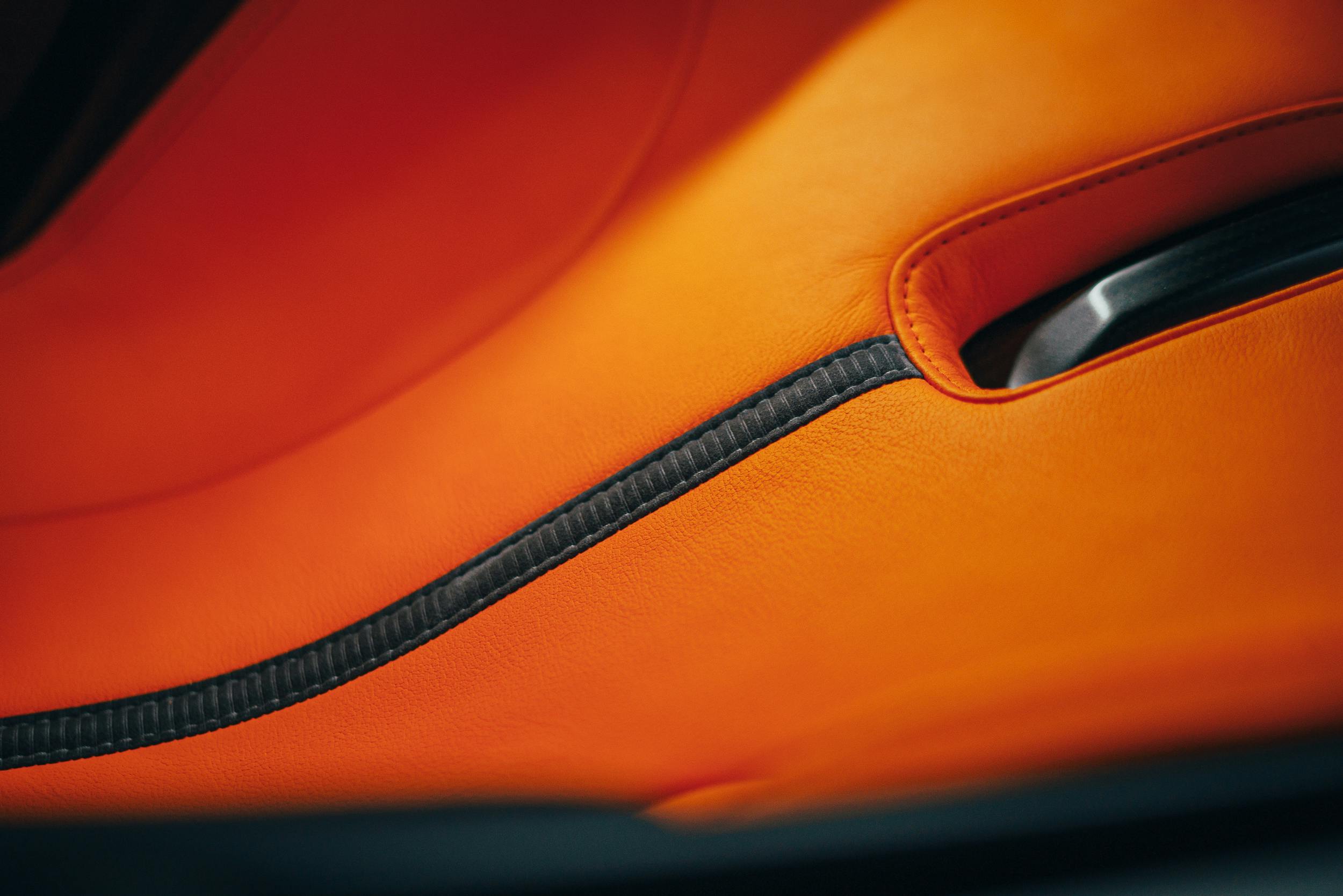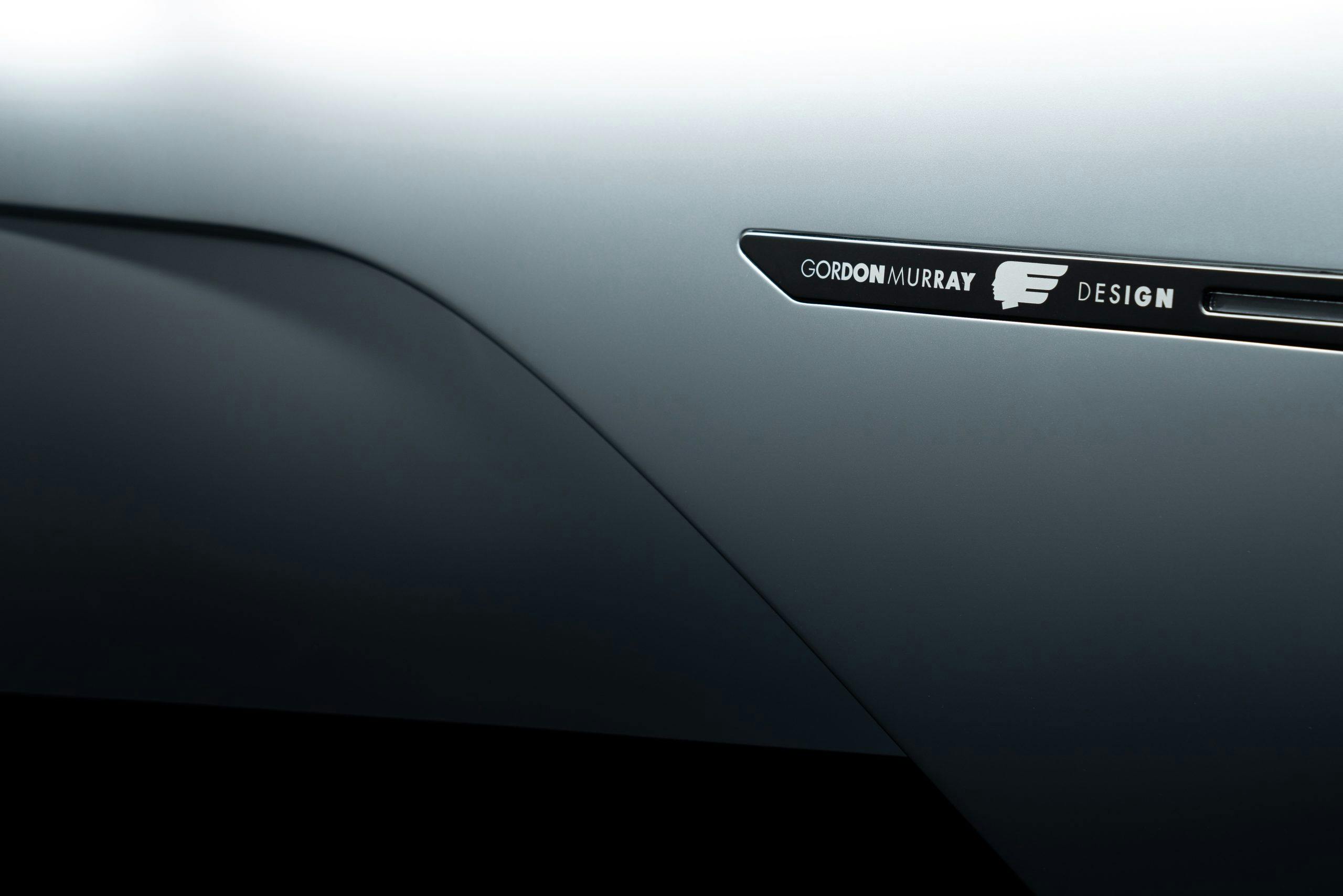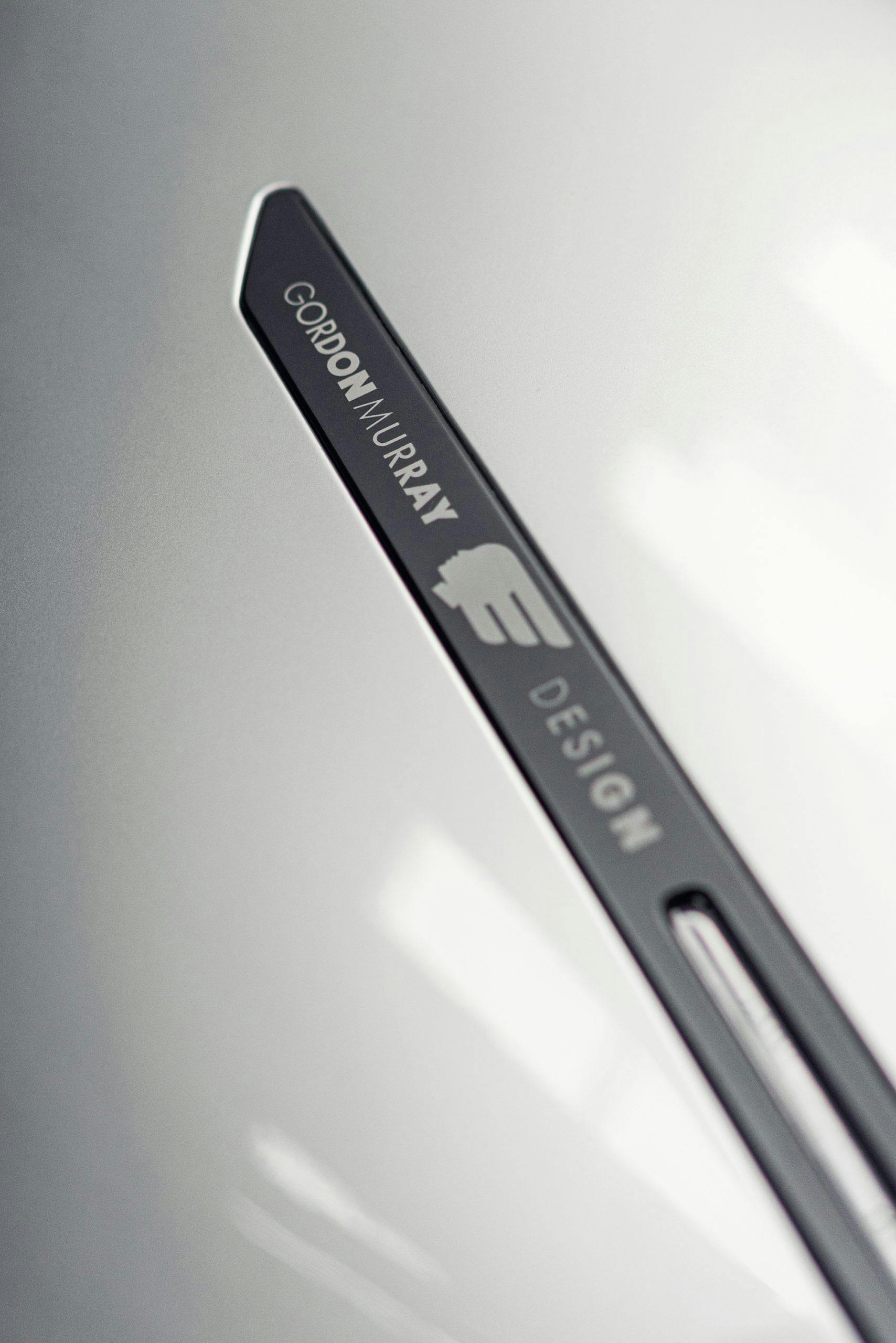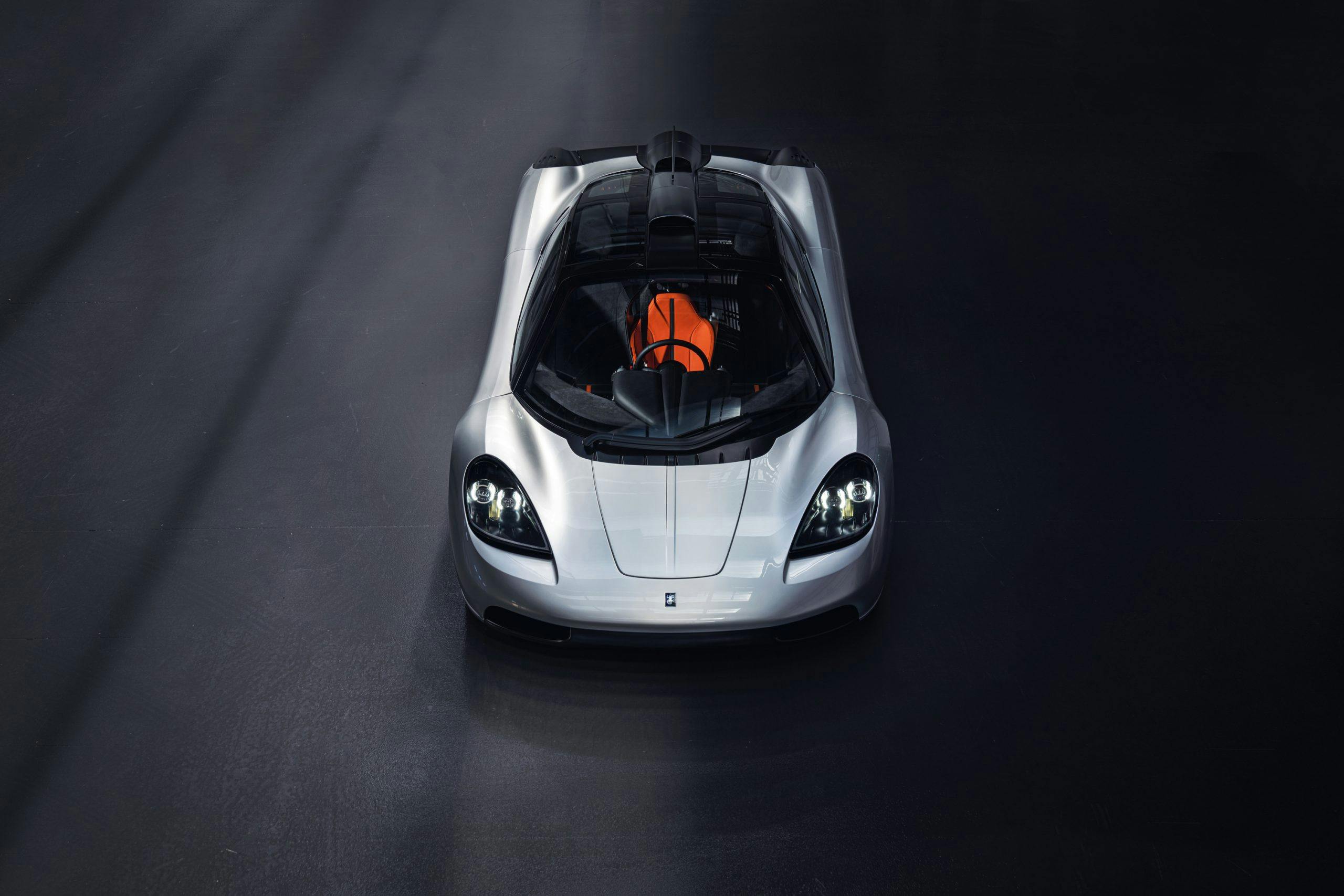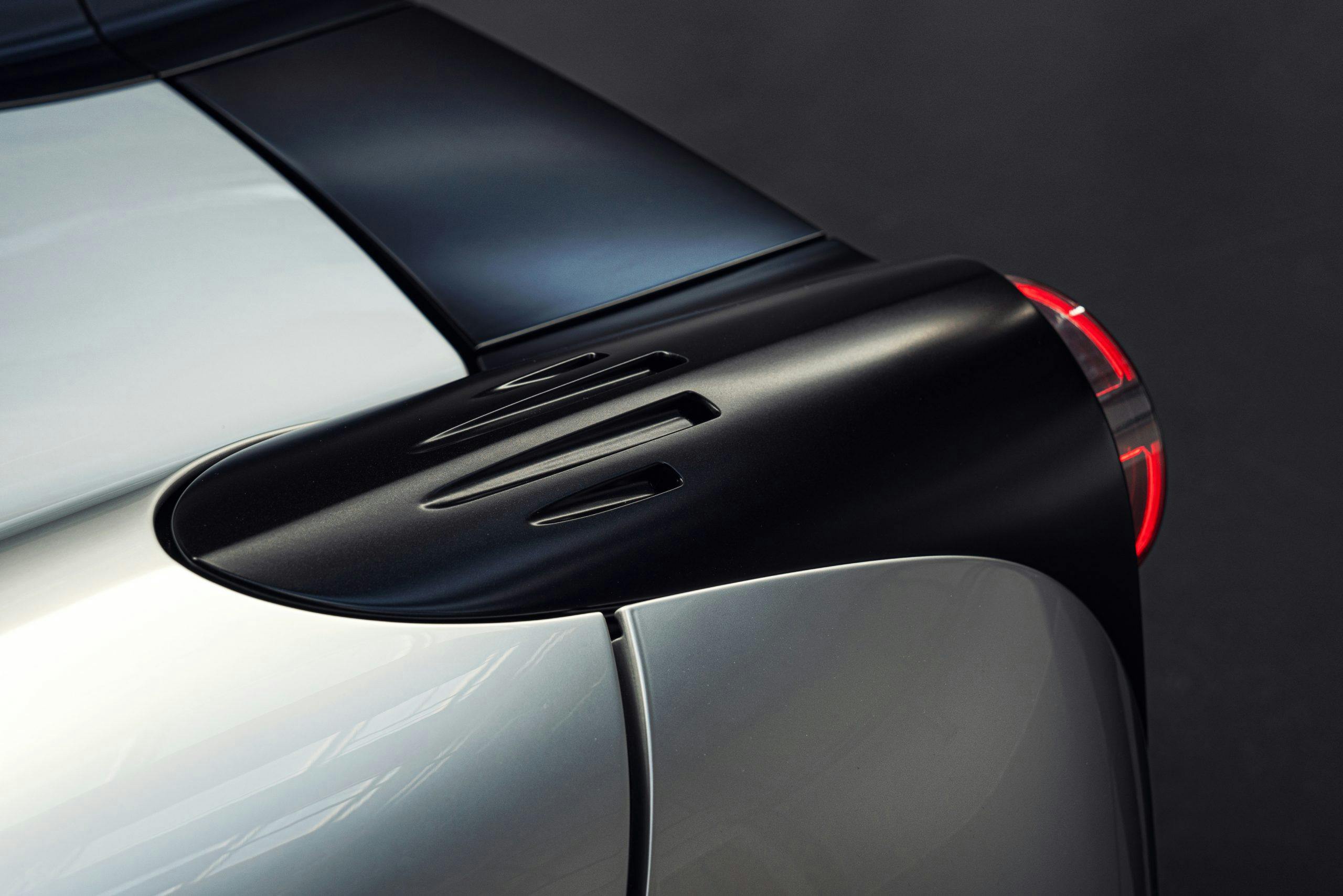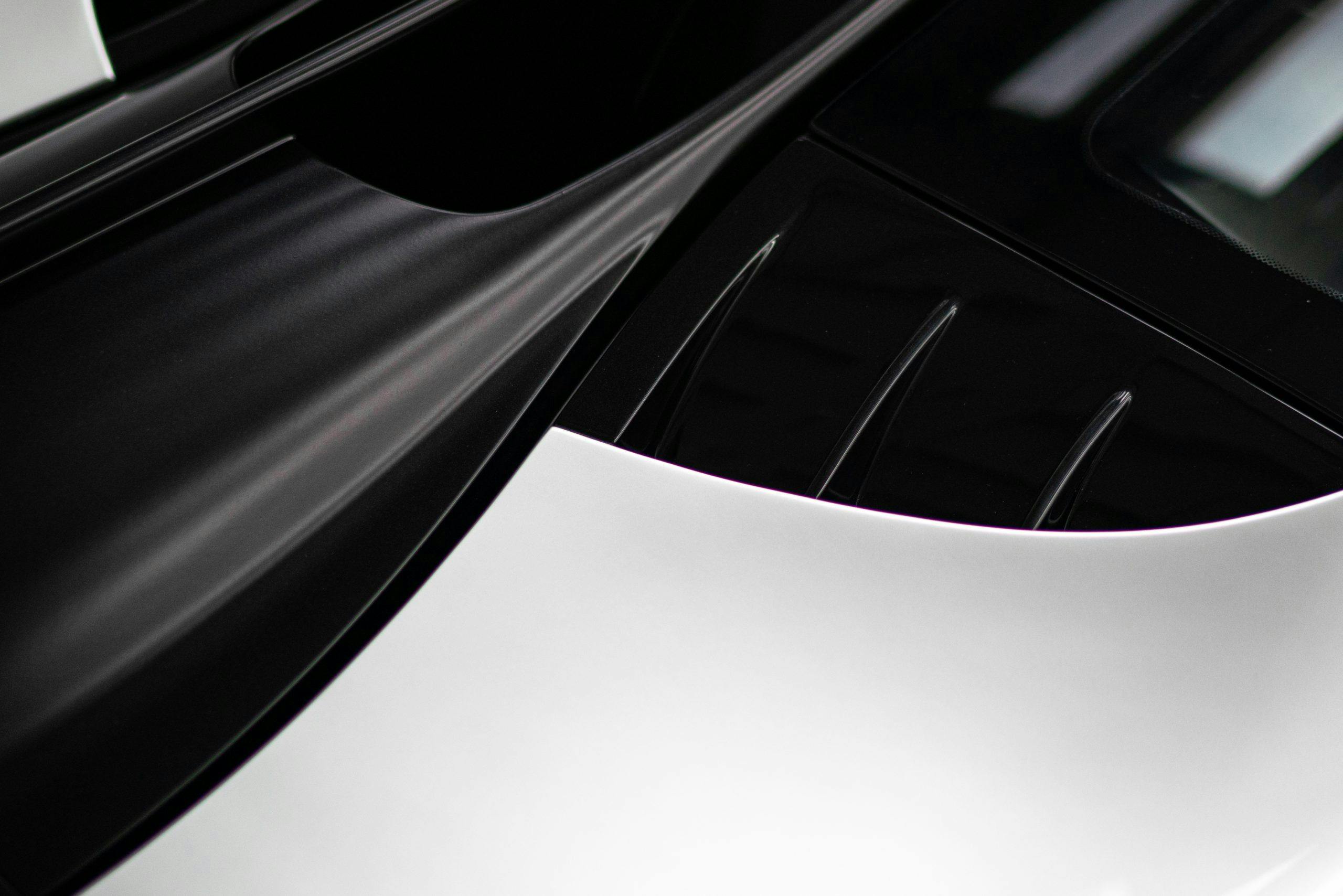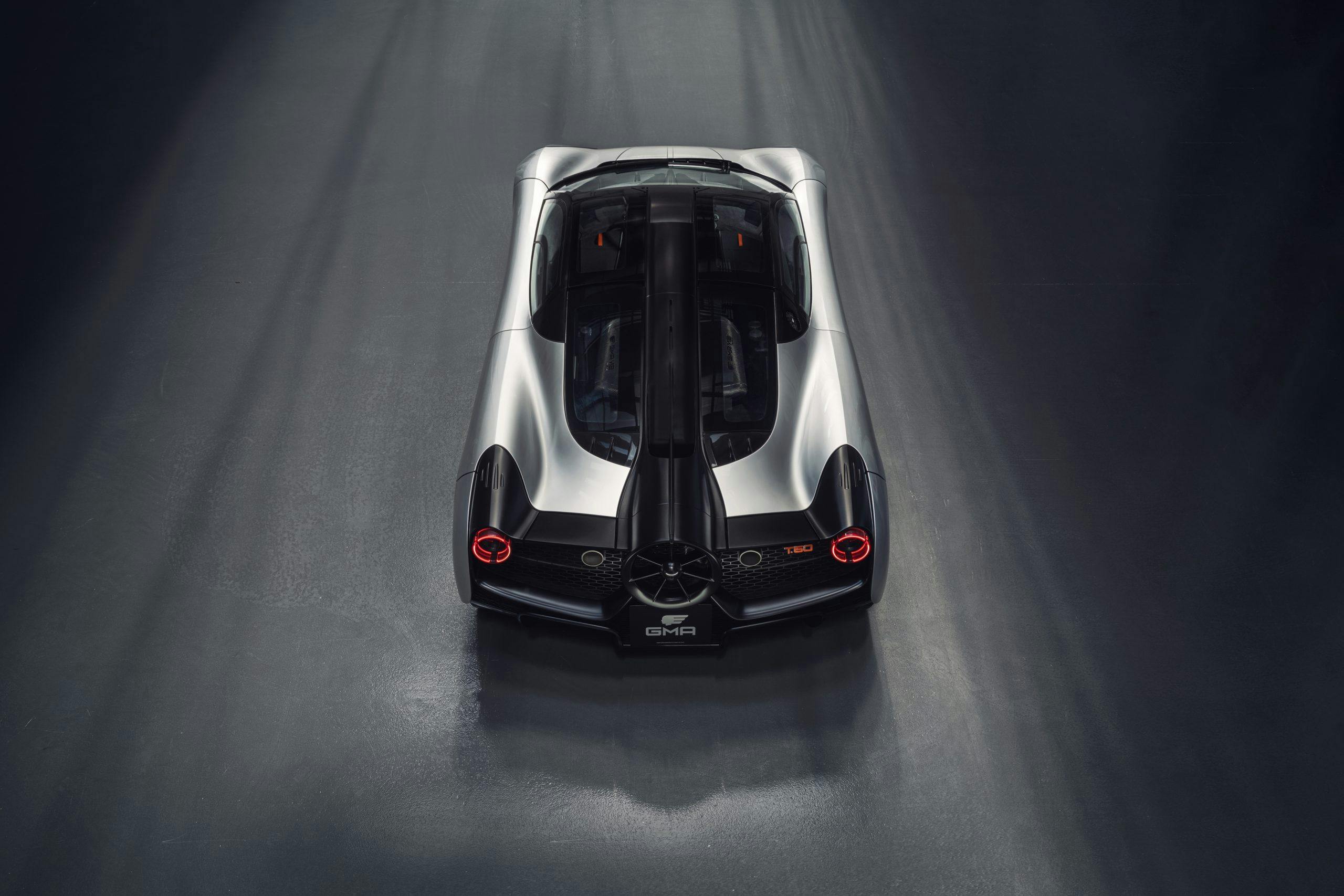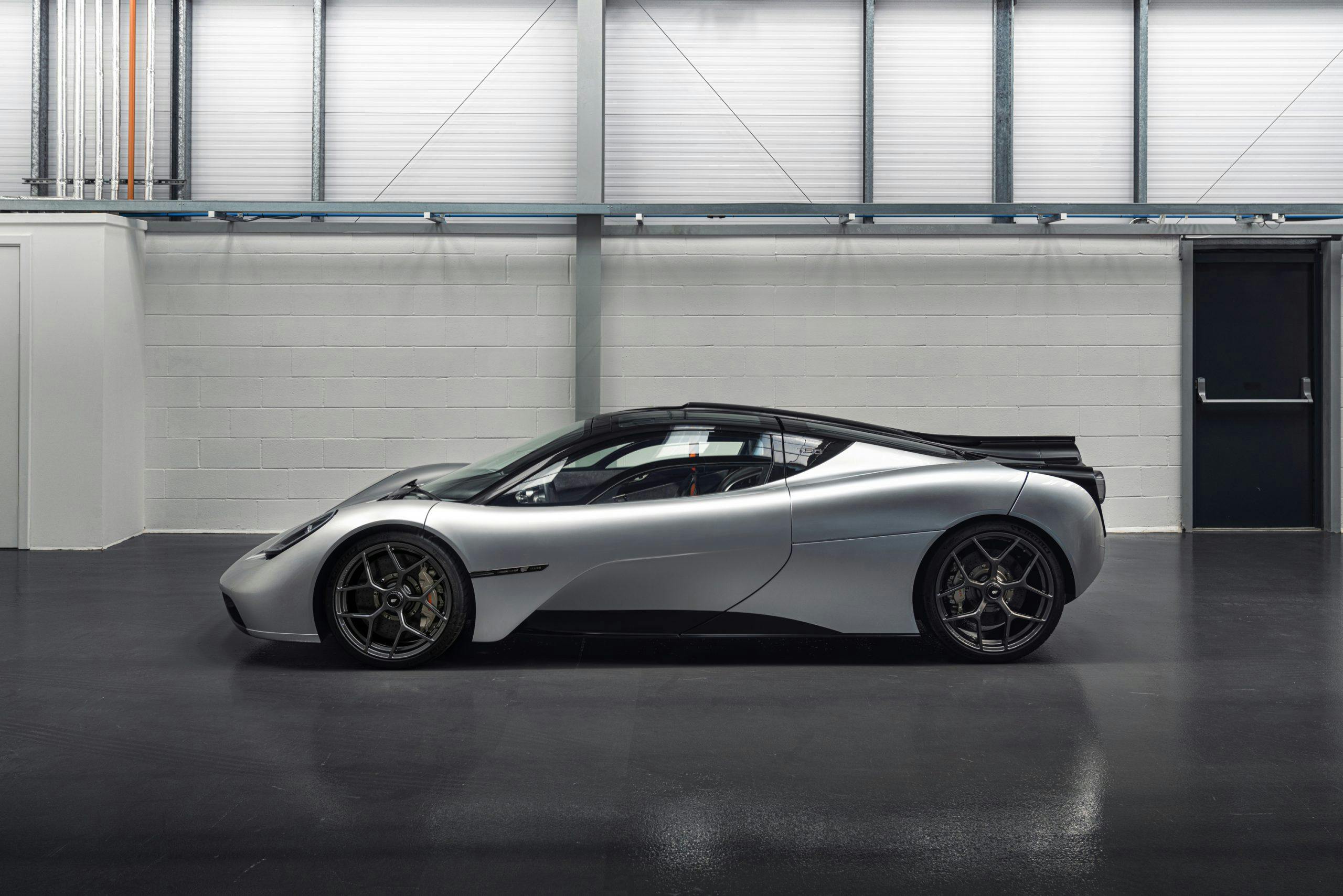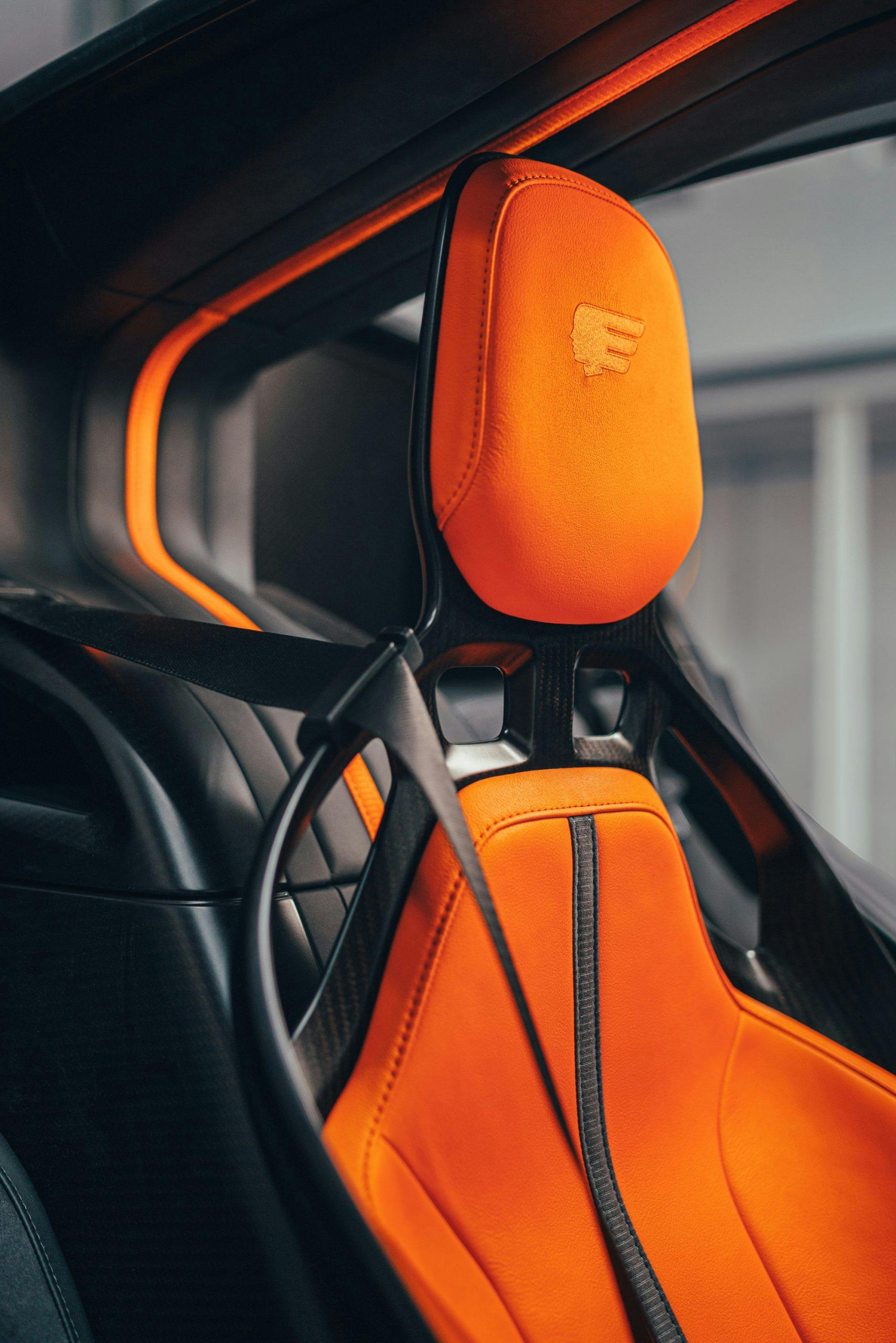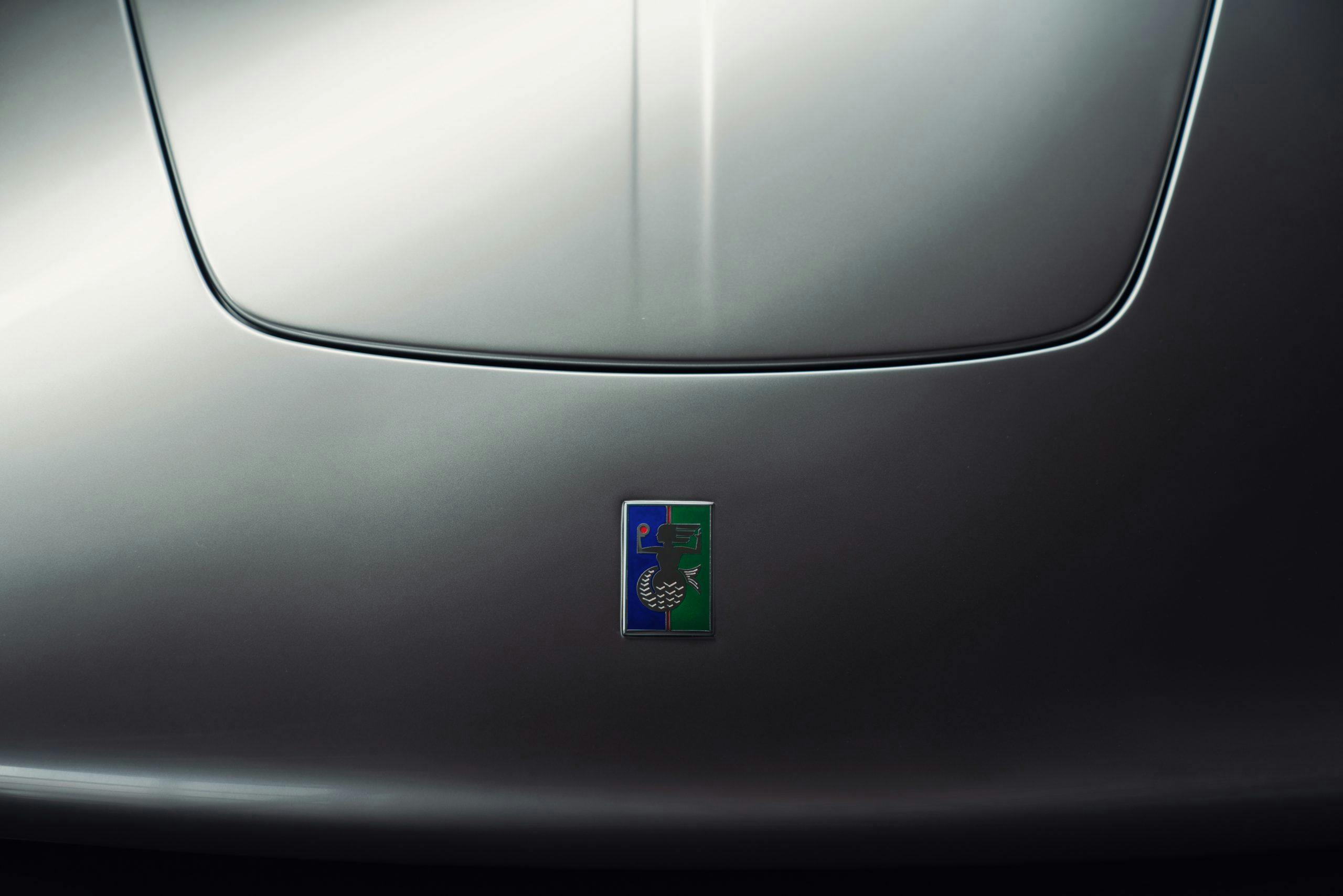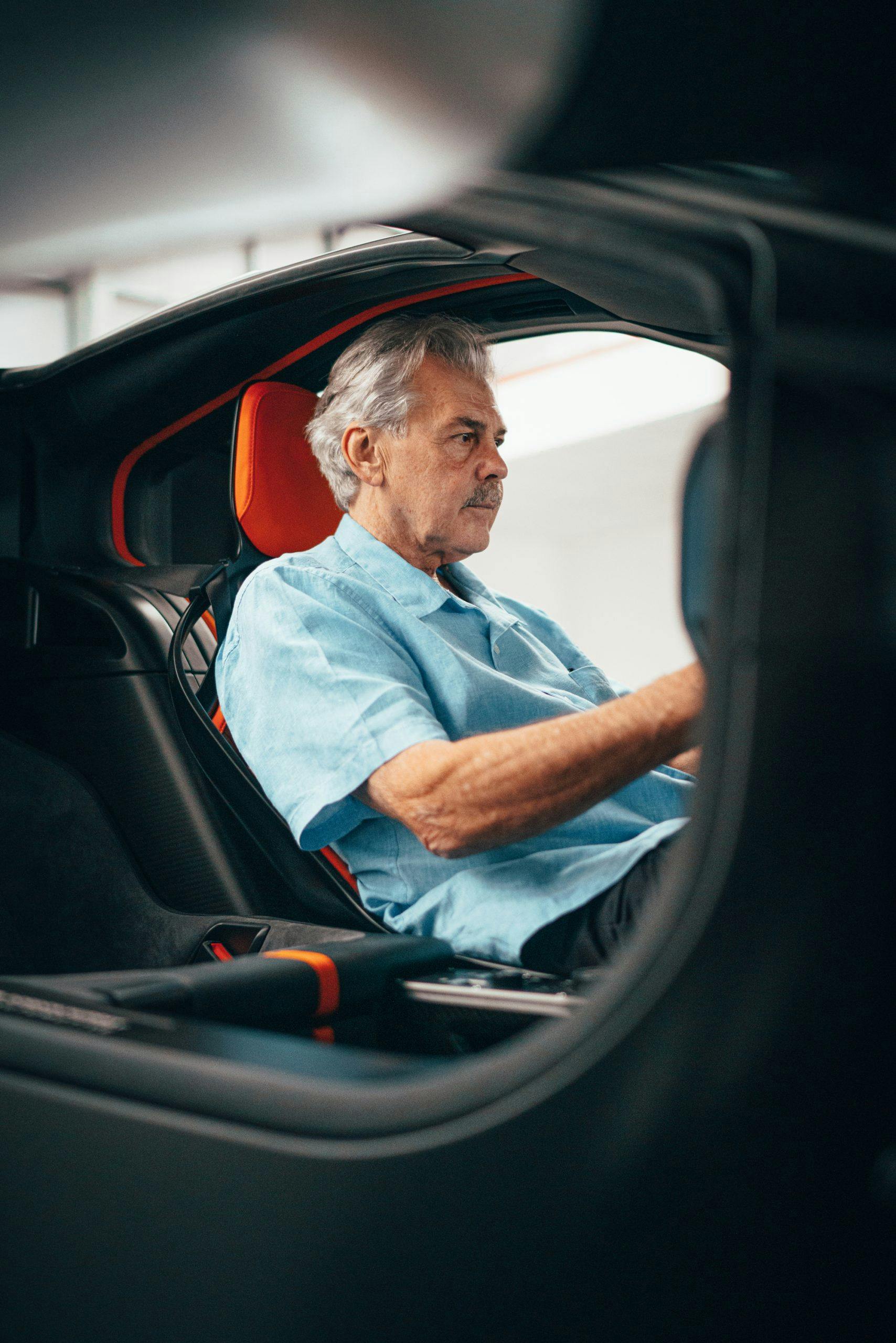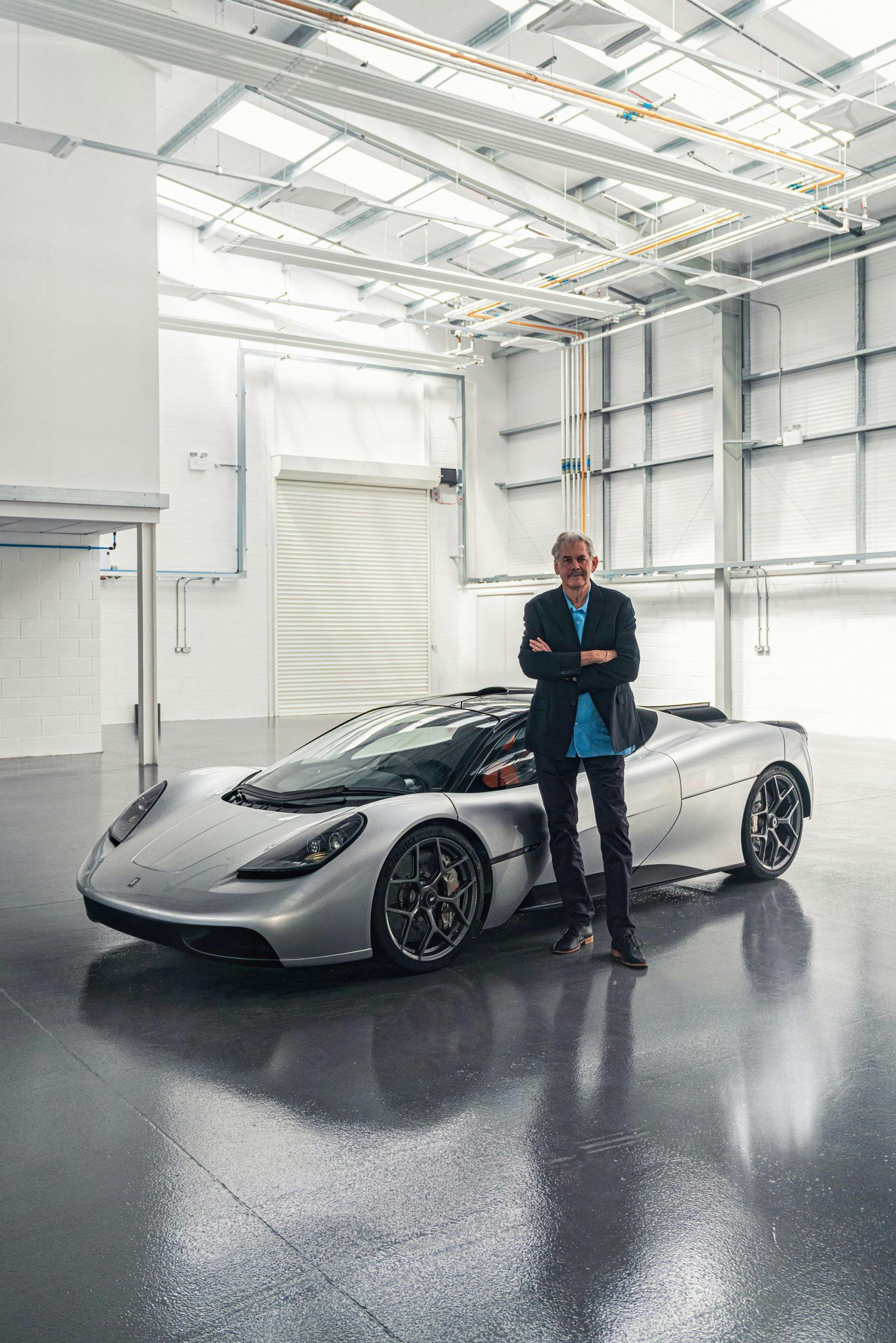Revealed: Gordon Murray’s T.50 hypercar is an ode to the naturally aspirated V-12
“It’s the last great analog supercar,” says Gordon Murray, as we survey his new T.50. Its connection to the McLaren F1, Murray’s seminal 1992 machine, is obvious. Note the seating-for-three and that jet fighter-like central driving position. The lowness, smallness and styling simplicity. Murray hates wings and spoilers and fussy style. From the front, it could almost be a McLaren F1.
It’s only from the rear that the T.50 appears very un-F1 like, due to the big 15.7-inch fan in the tail looking like the massive exhaust in a fighter jet. This is the T.50’s showpiece. That fan, linked to the underside, regulates downforce. It improves braking, cornering, stability and top speed. It’s the reason why the T.50 will have phenomenal performance but has no need for big wings, skirts, vents or other aero-linked styling excrescences.
Just how fast is the new T.50? “Top speed is not important, but we estimate about 230 mph,” says Murray. “That’s a bit slower than the F1 due to the extra downforce.” How quick will it accelerate to 60 mph? “I have no idea and I don’t care. I’m not chasing numbers. This car is all about driving enjoyment and engagement. But the power to weight ratio is better than a McLaren P1 or a Porsche 918. So if you think it’s going to be slow …”

Murray is the former technical director for the Brabham and McLaren F1 teams. His cars won world championships for Nelson Piquet, Ayrton Senna, and Alain Prost. He also has history with fan cars; his 1978 Brabham BT46B used a fan to boost downforce, won the Swedish GP for Niki Lauda, and was then promptly withdrawn amid controversy and complaints. After 20 years in GP racing, Murray turned his attention to road cars to give us the McLaren F1, the fastest supercar of its day, and by some margin.
Although the T.50 is a car more about feel than figures, let’s start with the headline numbers. At 2174 pounds with fluids but no fuel (or 2110 pounds dry weight), it promises to be the lightest modern-era supercar. “Light weight is the key to great performance,” Murray says. “Not just for acceleration but for braking and handing too.” The new Ferrari SF90 Stradale, by way of comparison, weighs almost 3500 pounds.
The bespoke mid-mounted 3.9-liter, 653-hp engine is the lightest, highest-revving (to 12,100 rpm) and most power-dense naturally aspirated road V-12 in the world. It’s built and developed by Cosworth, famous for its racing engines. Murray claims it will be the finest V-12 ever built and the most throttle responsive, and it will employ neither hybrid nor turbo power.
The transmission is a six-speed H-gate manual, built by Xtrac. The T.50 uses rear-drive only—no all-wheel setup here. Suspension is by forged aluminum double wishbones. Steering is by rack and pinion and there’s power assistance for parking, but it’s unassisted at speed for a purer feel. Murray pioneered carbon fiber in road cars with the McLaren F1, so, naturally, the body and monocoque of the T.50 are carbon. As on the F1, a pair of dihedral doors give access to the three seats. The twin passenger seats are outboard of, and behind, the central driver’s seat.
A T.50 will cost you £2.36 million before taxes (that’s $3.08 million at today’s exchange rate) and the lucky owners will buy direct from Gordon Murray Automotive in the U.K. Only 100 examples will be built and “about 70” have already been sold, sight unseen. America and Japan will be the two biggest markets. As for the T.50 name, this vehicle is 50th road or racing car Murray has designed and also celebrates Murray’s 50th year as a car designer.
We meet the affable 74-year old at Gordon Murray Automotive’s (GMA) headquarters in Dunsfold in Surrey, south-east England. This is where GMA will build all 100 cars, by hand. The first is due for completion in January 2022.
The silver T.50 we view is McLaren F1-like in style and extremely compact. It’s a tiny bit longer and wider than an F1, but shorter than a 718 Boxster and about the same width as a 911. (Murray hates excess size, as well as weight.)
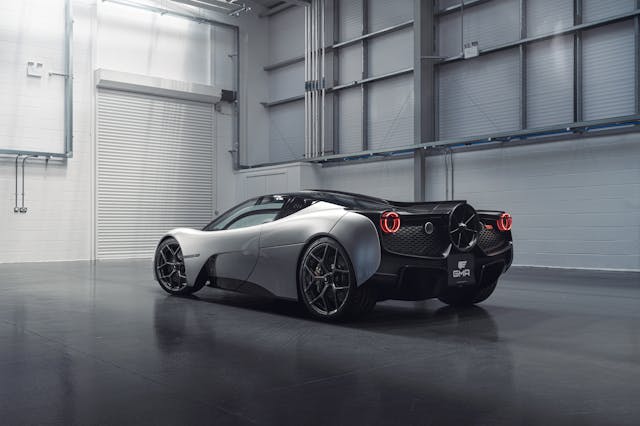
We start talking about the car’s most controversial feature—the fan at the car’s rear. It’s driven by a 48-volt motor and spins at up to 7000 rpm, accelerating air that passes under the car and forcing it through active ducts that form part of the rear diffuser. The fan and its ducting system actively manage underbody and overbody air flow, working with a pair of active spoilers at the rear.

There are six driver-selected aero modes. In default Auto setting, the fan is inactive: the ground effect downforce is passive. The other modes all engage the fan either to boost downforce for improved braking, stability or cornering, or reduce drag to increase straight line speed. The fan can even extend the trailing wake of the car, creating a virtual “long tail” for better streamlining. Downforce can be boosted by up to 50 percent (100 percent for braking) and drag can be reduced by 12.5 percent. The fan can also be utilized for ram air induction to (briefly) increase maximum engine output to 690 hp.
The engine is unique to the T.50 and unrelated to the Aston Martin Valkyrie’s Cosworth V-12. “It had to be a V-12, it’s the ultimate supercar engine. It’s all part of the romance of the car. It also had to look beautiful.” Mission accomplished. All ancillaries are driven by gears not unsightly belts. Connecting rods and valves are titanium. The engine bay is accessed by a twin gullwings that hinge on the car’s spine.
Why no turbochargers? “Turbos just don’t give you good enough throttle response and that instant pick-up.” Why no hybrid? “Too heavy and you don’t get the instant response that a sports car needs.” No all-wheel drive? “Too much weight, hurts the steering feel and the packaging.” No shift paddles? “An H-pattern manual shift provides a more satisfying driving experience. It’s more engaging and also lighter.” That settles that, then.
Despite the low weight, the T.50 includes all the expected cabin creature comforts: air conditioning, navigation, and a new 10-speaker audio system from British specialist Arcam that weighs just 8.6 pounds. There are no touchscreens, because Murray hates them. No column stalks, either.
All switchgear is bespoke, “all engineering art,” says Murray. The controls are machined from solid aluminum, as are the brake and clutch which are milled from the metal, while the most important control of the trio—the accelerator—is crafted from lightweight titanium to deliver the ultimate in control and sensitivity.
There is no fast car today quite like the T.50, and there will probably never be another one like it. Murray insists he won’t do any more: future GMAs won’t be supercars in this vein. Plus, the T.50 may well showcase the last all-new naturally aspirated V-12 engine. If so, this utterly special supercar will be a swan song people will remember for a long time to come.
Gordon Murray Automotive T.50
Price: $3.08 million
Layout: 2-door, 3-passenger, mid-engine rear-wheel0drive coupe
Engine: 3.9-liter DOHC naturally aspirated V-12, 653 hp, 344 lb-ft
Transmission: 6-speed manual
